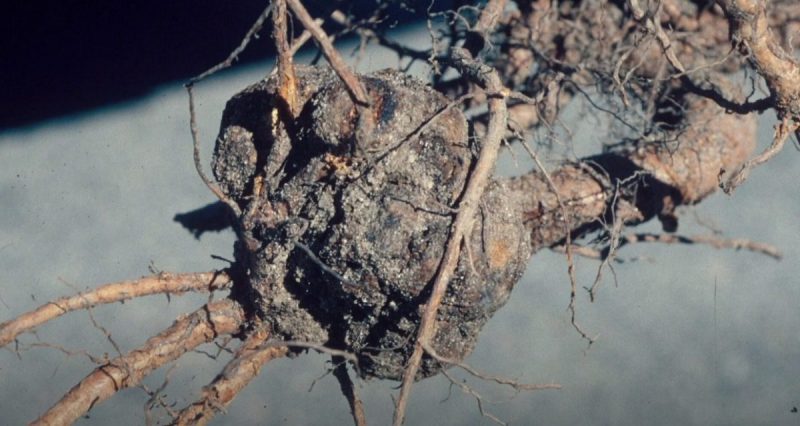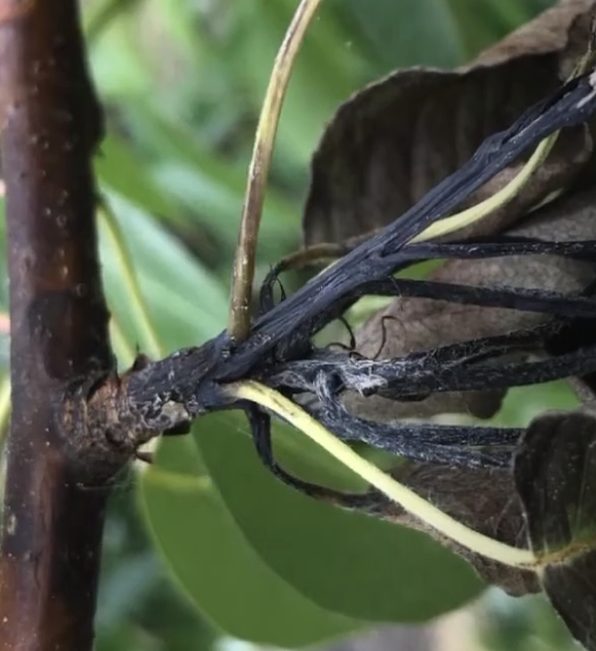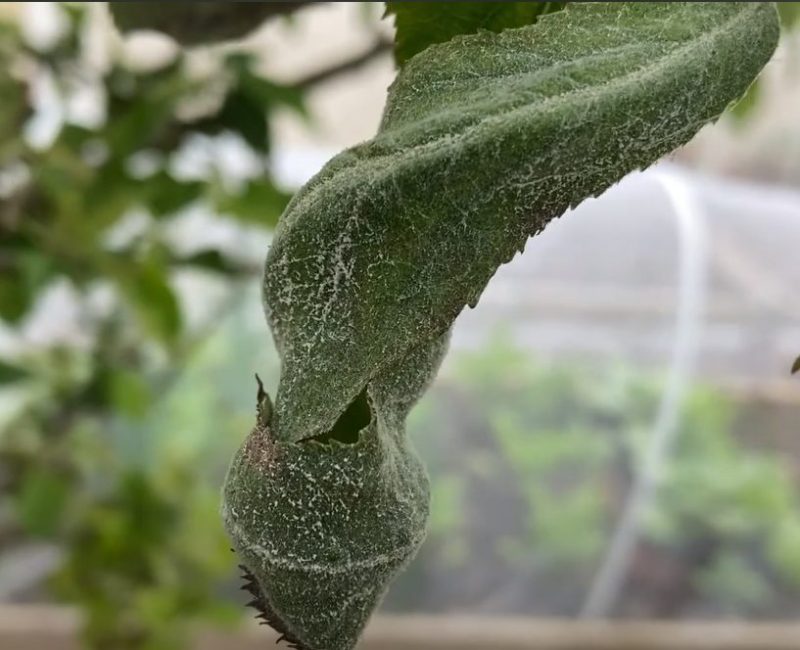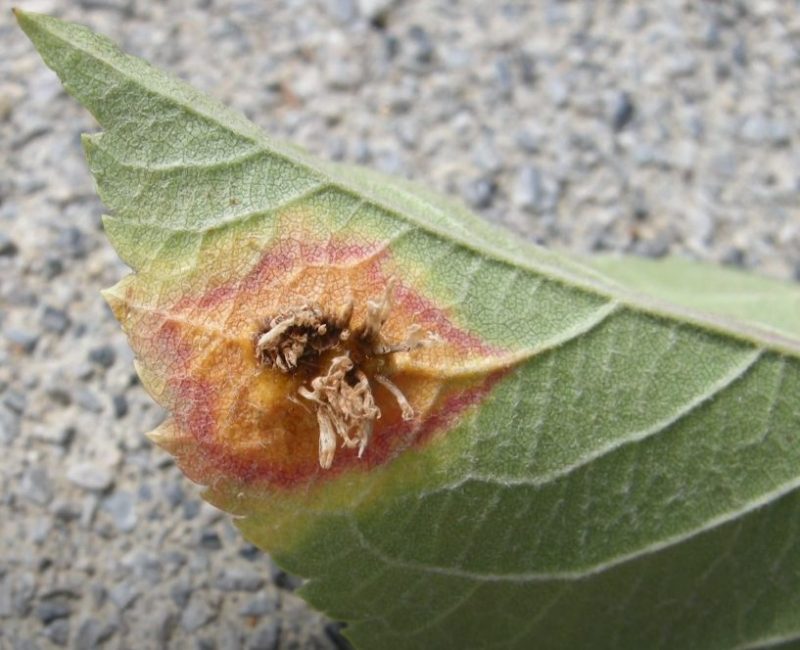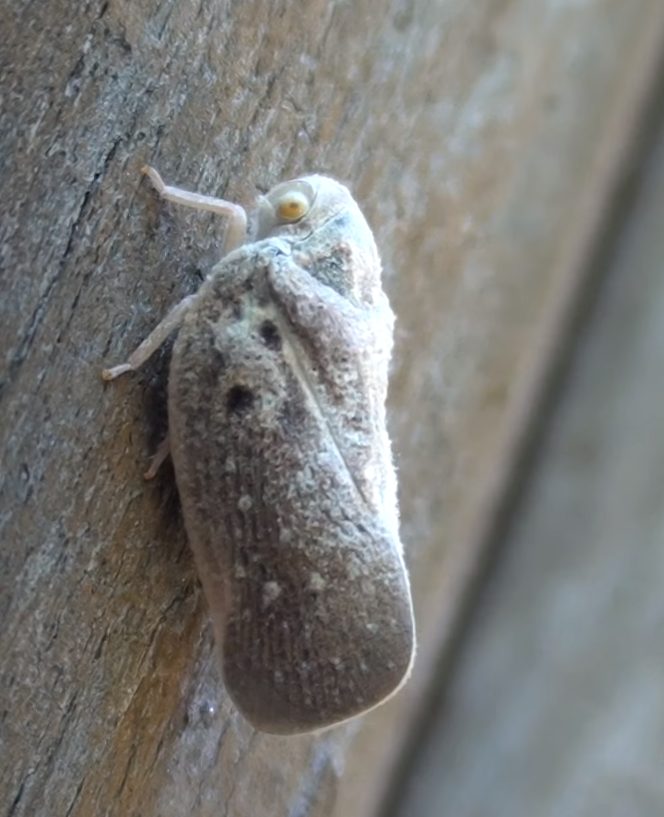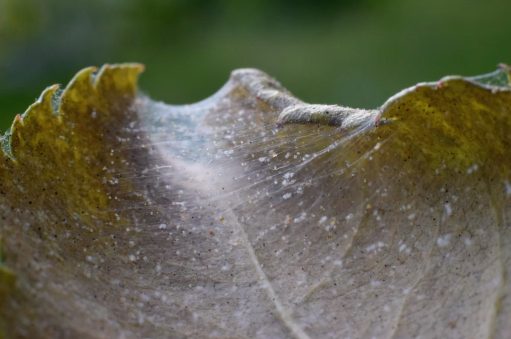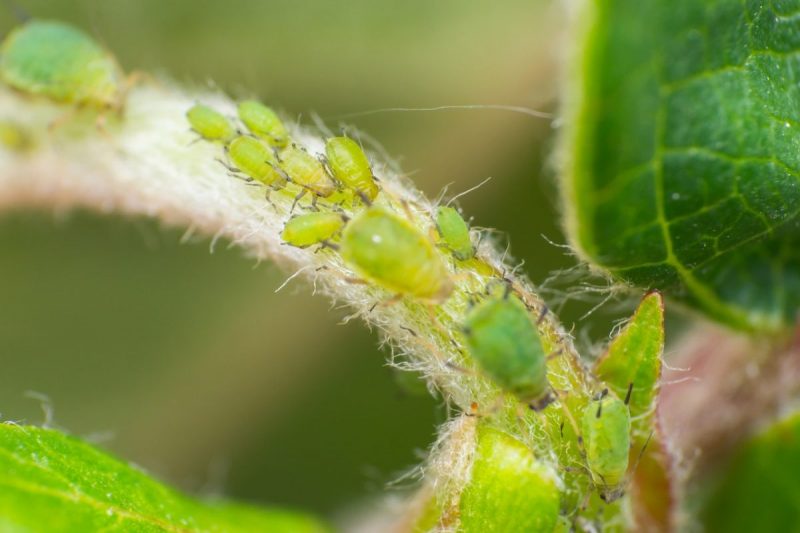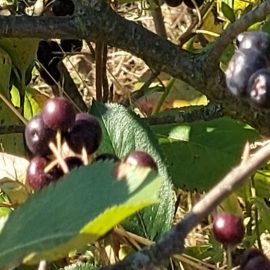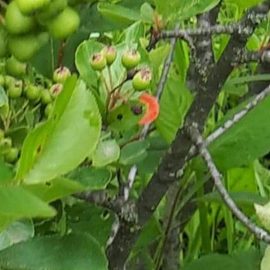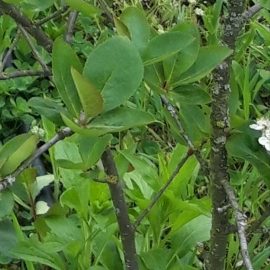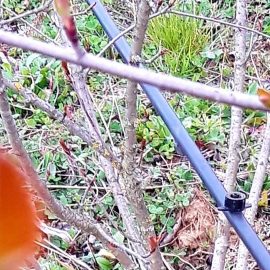Chokeberry treatments, pest and disease control
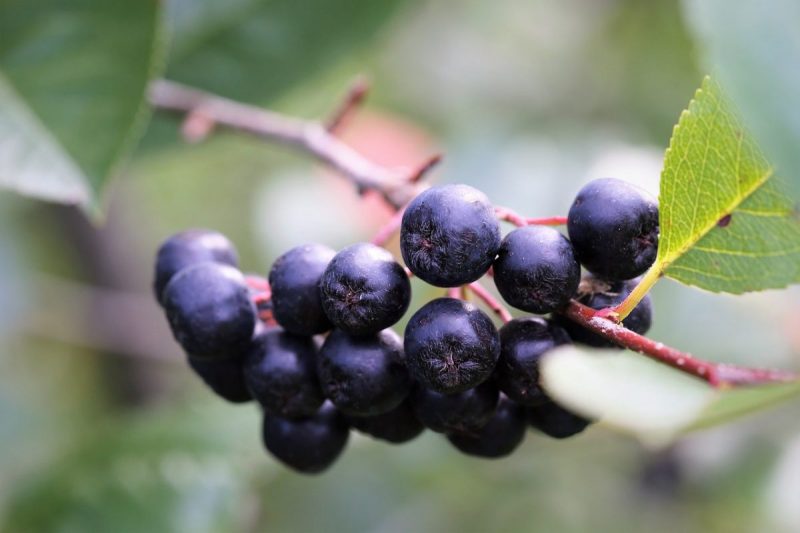
Chokeberry (Aronia melanocarpa) is a fruit-bearing shrub, native to North America. Aronia berries are considered one of the most powerful natural antioxidants. Consumption is recommended in the treatment and prevention of different heart diseases. Also, chokeberry consumption prevents aging, protects the body from UV rays, and strengthens the immune system. These berries also have a strong antibacterial effect. Chokeberry bushes are also cultivated for decorative purposes.
The main diseases of chokeberry shrubs
Bacterial gall (Agrobacterium tumefaciens)
This bacterium enters the plant through wounds caused by nematodes or weather conditions (eg. hail). The emergence of the disease is favored by temperatures between 22℃ and 30℃, and atmospheric humidity of 80%. Tumors develop on the roots and stems. At first, they are small and soft, but later they become woody. Tumors have different shapes and sizes.
Prevention and control measures:
- planting chokeberry plants on properly prepared fields;
- sorting seedlings before planting;
- disinfecting scissors and tools when moving from one shrub to another;
- pruning affected branches to the healthy area, applying treatment with Bouillie Bordelaise, and covering the wounds with wound sealer;
- chemical treatments during the vegetation period, with copper-based products.
Fire blight (Erwinia amylovora)
It is a dangerous disease that can destroy the entire plantation. The disease is favored by high atmospheric humidity, wind, precipitation, and temperatures between 10 and 30 °C. Shrubs attacked by this disease appear to be burnt by fire. The leaves wither and turn brown, and the fruit blackens or becomes spotted. In wet weather, on affected areas appears bacterial ooze.
Prevention and control measures:
- pruning and burning the affected branches;
- applying chemical treatments with specific fungicides.
Powdery mildew (Podosphaera sp.)
The attack appears on the leaves of young shoots as white spots that spread and cover the entire leaf. As the disease progresses, the mycelium becomes greyish and dusty and the attacked tissues fade and dry out. The fungus also attacks young fruit, covering them with white mycelial haze. Later, the fruit cracks and rots.
Prevention and control measures:
- balanced fertilization;
- growing resistant varieties;
- burning of the attacked shoots and fruits.
Rust (Gymnosporangium sp.)
The fungus establishes its first development stages on juniper. Then, the spores are transported by water and wind, infesting other species, including chokeberry plants. Yellow (slightly reddish) spots are formed on the top side of the leaves, in front of which small black spots appear. These represent the fungus fructification. On the underside, the tissues bulge and form elongated, yellow fungus fructifications. Symptoms can also appear on the flower buds.
Prevention and control measures:
- destroying weeds in the proximity.
Entomosporium leaf spot (Diplocarpon maculatum)
This fungus is a polyphagous species that infects several plants of the Rosaceae family. The main form of attack is on the leaves. Symptoms consist of circular, yellowish-cream, and later reddish spots. Black dots appear in the center of these spots, representing the fungus fructifications. The spots can merge and cause complete defoliation. The disease can attack both the shoots and the fruits. The shoots turn brown and dry out, and leaf-like spots appear on the fruit. These merge and the pulp cracks, leading to fruit rot.
Prevention and control measures:
- gathering and burning fallen leaves;
- cutting and destroying attacked shoots (by burning).
The main pests of chokeberry shrubs
Citrus flatid planthopper (Metcalfa pruinosa)
It is a polyphagous species that attacks vines, shrubs, and fruit trees. It develops one generation per year and overwinters in the egg stage inside the branches of attacked plants. Adults and larvae feed on the plant’s sap, inhibiting growth and spreading numerous viruses. Fighting this species is very difficult because of the waxy layer covering the insect’s body. For this reason, it can quite easily be confused with the woolly apple aphid (Eriosoma lanigerum).
Mites
These insects are difficult to see with the naked eye. They are polyphagous species, attacking many fruit plants and shrubs, both cultivated and wild species. They feed on the cell juice, and after the attack, the leaves look parched, the flowers abort and the plant stagnates in growth.
Fall webworm moth (Hyphantria cunea)
It is a polyphagous species that attacks ornamental trees (mulberry, sycamore, etc.), fruit tree species, and fruit shrubs. It has two generations per year and overwinters as a pupa in the topsoil. This insect causes defoliation of the shrubs and thus a decrease in fruit production. The caterpillars settle on the underside of the leaves and begin to consume them. After a short time, they form a nest, inside which they feed.
Cherry fruit fly (Rhagoletis cerasi)
It is a dangerous species that can cause damage even after harvesting. Attacked fruits turn a light color and rot. It develops one generation per year and overwinters as a pupa in the topsoil.
Aphids
They are polyphagous species that migrate from one plant to another or from one species to another. Aphids grow on wild flora and then move to cultivated species. They appear as colonies on the underside of leaves, on flowers or inflorescences, and young shoots. Insects sting and suck the plant’s sap, and in case of a severe attack, decrease the shrub’s resistance to disease.














































































































































































































































































































































































































































